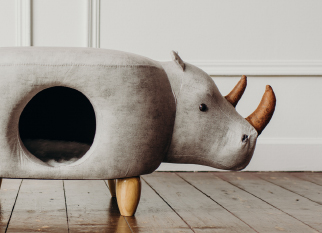What are the characteristics of the conductor structure design of rubber cord and cable
Among the conductor material selections for Rubber Cord and Cable products, copper and aluminum are the two most commonly used conductor materials. Copper has become the preferred material for high-conductivity application scenarios due to its excellent conductivity. Especially in the fields of industrial automation control systems and high-precision electronic equipment, copper conductors, with their low resistance characteristics, can significantly reduce the loss during energy transmission, thereby ensuring that the equipment can obtain a stable and sufficient power supply. In contrast, aluminum conductors, due to their lightness and cost-effectiveness, perform well in cost-sensitive occasions with relatively loose conductivity requirements. For example, in large-scale building power wiring, aluminum conductor cables effectively reduce the overall weight, reduce installation difficulty and cost, and meet basic power transmission needs.
The structural form of the conductor is also a key factor in the design of Rubber Cord and Cable products. The multi-strand twisted structure is a notable feature of this conductor. This structure shows many advantages over single-strand conductors by twisting multiple thin copper or aluminum wires together. The multi-strand twisted structure significantly enhances the flexibility of the conductor, allowing it to effectively cope with bending or twisting, avoiding the risk of breakage. For equipment that needs to be frequently moved or installed in narrow spaces, such as mobile power tools and bendable lighting fixtures, multi-stranded conductors can be flexibly deformed to ensure the continuity of power transmission. In addition, the design of the twisted structure also increases the surface area of the conductor, which helps to dissipate heat. The heat generated when the current passes through the conductor can be dissipated more quickly, reducing the conductor temperature, thereby reducing the safety hazards caused by overheating and extending the service life of the cable.
The design of the conductor cross-sectional area is also an important link that cannot be ignored in the design of the conductor structure. According to actual use requirements, Rubber Cord and Cable products are equipped with conductors of different cross-sectional areas to meet different current carrying requirements. For equipment that needs to carry large currents, such as large industrial motors and power transformers, the use of conductors with larger cross-sectional areas can effectively reduce resistance, reduce energy loss, and avoid failures caused by overheating of conductors due to excessive current. For some electronic devices with lower current requirements, such as small sensors and low-power lighting equipment, conductors with smaller cross-sectional areas can be used to meet power supply needs while optimizing cost and weight.
In order to further improve the anti-oxidation and electrical conductivity of the conductor, some Rubber Cord and Cable conductors will be tinned. The protective film formed by the tin layer can effectively prevent oxidation on the conductor surface, reduce the hindrance of the oxide layer to current transmission, and ensure that the conductor maintains good conductivity for a long time. In a humid or highly corrosive environment, the advantages of tin plating are particularly obvious, which can significantly extend the service life of the conductor.


 English
English русский
русский 中文简体
中文简体 Español
Español













